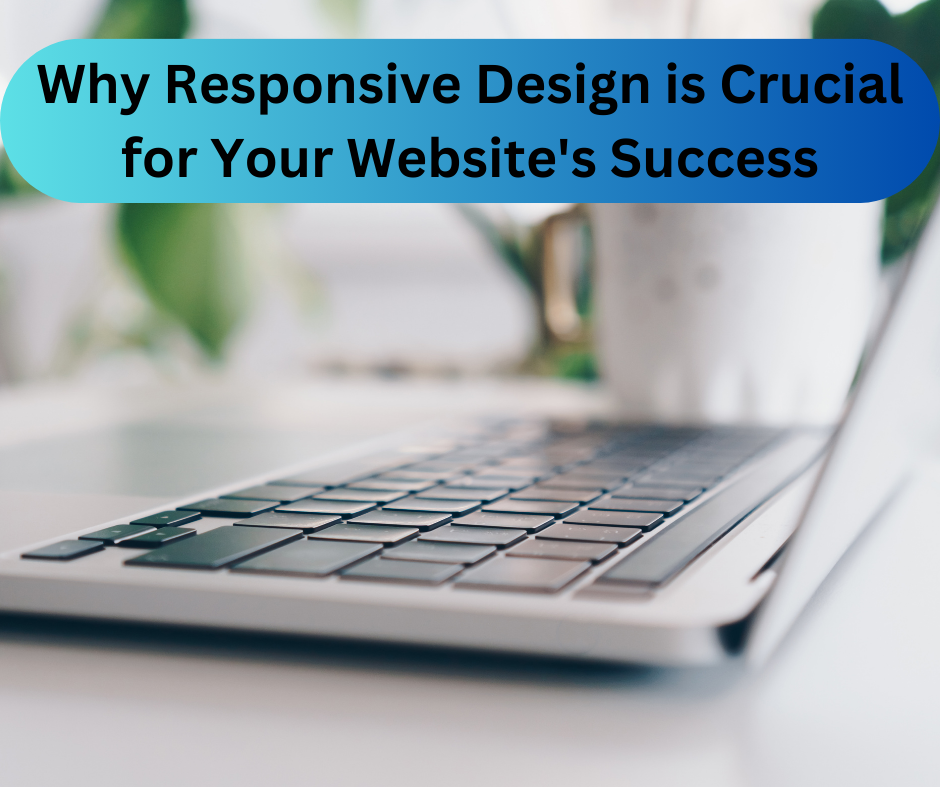Having a visually appealing and user-friendly website is no longer just a luxury – it’s a necessity. With millions of websites competing for attention, standing out from the crowd is crucial. And that’s where responsive design comes into play. Imagine this scenario: you stumble upon a beautifully designed website on your smartphone. The images are crisp, the text is perfectly aligned, and the overall experience is seamless. Now imagine visiting another website on the same device, but this time the elements are all scattered, the text is barely readable, and you find yourself constantly zooming in and out just to navigate.
As the online world becomes increasingly mobile-centric, having a website that adapts seamlessly to different screen sizes and devices is no longer a choice – it’s a requirement. This is where responsive design shines, ensuring that your website looks and functions flawlessly on any device, be it a smartphone, tablet, or desktop computer.
By using a combination of flexible grids, images, and CSS media queries, responsive design ensures that your website is not only visually pleasing but also optimized for a superior user experience. When it comes to web design, search engines also play a crucial role. In fact, search engine optimization (SEO) has become an integral part of any successful website strategy. By implementing responsive design, you’re not only providing a better user experience but also improving your website’s SEO performance. Search engines favor websites that are mobile-friendly, as they prioritize mobile-first indexing. This means that having a responsive website can greatly enhance your chances of ranking higher in search engine result pages (SERPs).
So, if you want your website to achieve success in today’s digital landscape, responsive design is paramount. By ensuring that your website is visually appealing, user-friendly, and optimized for search engines, you’ll be setting yourself up for a competitive advantage in the ever-evolving world of web design. Stay tuned to discover the key principles and best practices of responsive design, and unlock the limitless potential it holds for your website’s success.
Understanding Responsive Design: What It Is and How It Works
Responsive design is a crucial aspect of web design that ensures your website looks and functions flawlessly on any device. In this section, we will delve deeper into what responsive design is and how it works. Responsive design is a design approach that allows a website to automatically adjust its layout and elements based on the device it is being viewed on. This means that whether your website is accessed from a smartphone, tablet, or desktop computer, it will adapt seamlessly to provide an optimal user experience.
The key to responsive design lies in the use of flexible grids, images, and CSS media queries. Flexible grids allow for the fluid resizing of elements on a webpage. This means that instead of having fixed pixel widths for elements like images or text boxes, they are set as percentages relative to the screen size. As a result, these elements can expand or contract based on the available space.
Similarly, responsive images ensure that pictures are displayed at an appropriate size without compromising quality or loading times. By using CSS media queries, you can specify different stylesheets for different screen sizes. This allows you to control how your website appears on various devices by adjusting font sizes, margins, and other visual aspects.
Benefits of Responsive Design for User Experience
Now that we understand what responsive design is and how it works let’s explore its benefits for user experience (UX).One of the primary advantages of responsive design is improved accessibility. With more people accessing websites through mobile devices than ever before, it’s essential to provide an optimal browsing experience regardless of screen size. A responsive website ensures that users can easily navigate through your content without having to zoom in or scroll horizontally.
Additionally, responsive design enhances user engagement by creating a consistent brand experience across all devices. When users have a positive experience with your website on their smartphones or tablets, they are more likely to spend time exploring your content and interacting with your brand. This can lead to increased conversions, whether it’s making a purchase, filling out a form, or subscribing to a newsletter.Furthermore, responsive design improves website loading times. Mobile users often have limited data plans and slower internet connections compared to desktop users. By optimizing your website for mobile devices, you can reduce the file sizes of images and other elements, resulting in faster load times. This not only improves user experience but also positively impacts your website’s SEO performance.
Enhancing Search Engine Optimization with Responsive Design
Speaking of SEO, responsive design plays a crucial role in improving your website’s search engine rankings. Search engines like Google prioritize mobile-friendly websites in their search results. In fact, Google has implemented mobile-first indexing, which means that the mobile version of your website is considered the primary version for indexing and ranking purposes.By having a responsive website, you ensure that both desktop and mobile users have access to the same content. This eliminates the need for separate URLs or duplicate content across different versions of your site. As a result, search engines can easily crawl and index your webpages, leading to better visibility in search engine result pages (SERPs).
Moreover, responsive design contributes to a positive user experience by reducing bounce rates and increasing dwell time on your site. When users find it easy to navigate through your content on their preferred device without any frustrations or limitations, they are more likely to stay longer on your site and explore additional pages. These engagement metrics are important signals that search engines consider when determining the relevance and quality of a website.
Key Principles of Responsive Design
Now that we’ve covered the benefits of responsive design for user experience and SEO let’s dive into some key principles you should keep in mind when implementing responsive design.
Firstly, it’s essential to prioritize content based on its importance and relevance. On smaller screens, you may need to make certain design choices such as hiding less critical elements or reorganizing content to ensure a seamless user experience. By prioritizing content, you can ensure that users get the most important information without having to scroll excessively or zoom in.
Secondly, you should focus on touch-friendly design elements. Mobile users primarily interact with websites through touch gestures, so it’s crucial to make buttons, links, and other interactive elements large enough and well-spaced to avoid accidental taps. Additionally, consider using mobile-specific features like swipeable carousels or collapsible menus to enhance usability.
Lastly, regularly test your website across different devices and screen sizes to ensure that it functions as intended. This includes checking for any layout issues, broken links, or slow loading times. By conducting thorough testing and making necessary adjustments, you can provide a consistent and enjoyable user experience across all devices.ConclusionResponsive design is not just a trend; it’s a necessity in today’s digital landscape. By implementing responsive design principles, you can create a visually appealing and user-friendly website that adapts seamlessly to different screen sizes and devices. This not only enhances user experience but also improves your website’s SEO performance by ensuring mobile-friendliness.
The AI Web Agency is dedicated to helping our clients grow their business. Growth is the DNA and foundation of our focus in everything we provide to our clients. The AI Web Agency offers marketing services that make our client’s phones ring, their websites fill with visitors, and keeps their existing clients engaged. We deliver this growth both online and offline, to local businesses and national brands. We leverage the power of AI to provide precision personalized content delivered via Email, Web, and Social Media to help businesses grow.









